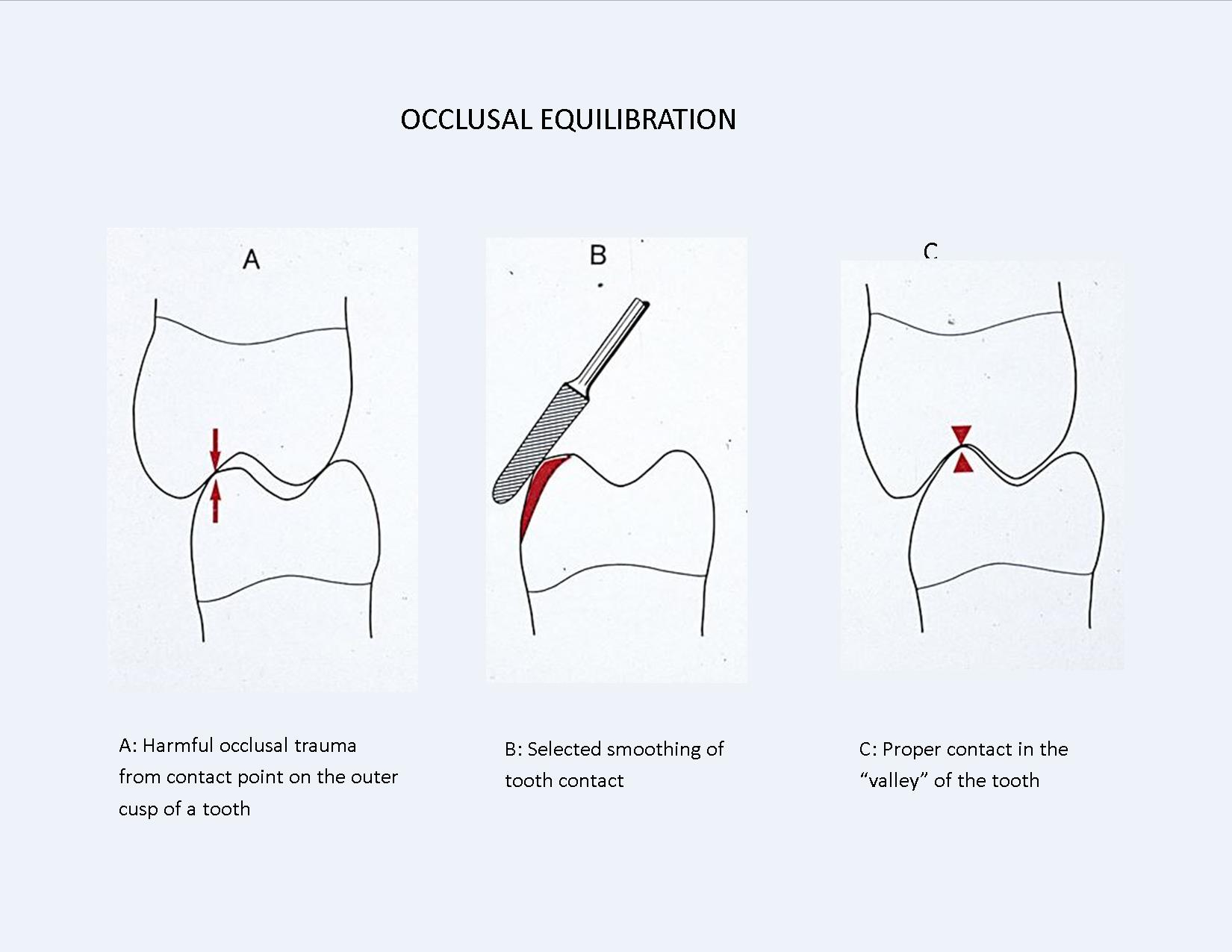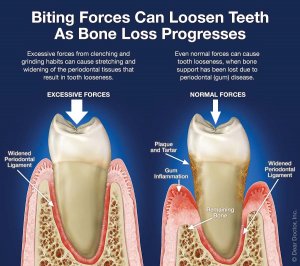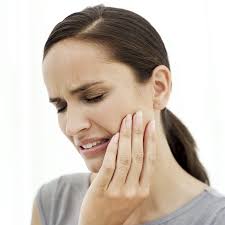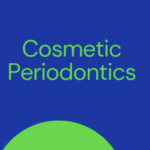Occlusal equilibration is a gentle procedure that allows your lower teeth to contact your upper teeth very evenly all the way around your mouth.
The goal of this treatment is to create a “solid bite” that prevents stress on individual teeth and reduces stress on the jaw muscles and jaw joint.
What’s involved? Dr. Todd Britten selectively and precisely reshapes the tiny bumps and valleys of the biting surfaces of individual teeth. Anesthesia is generally not needed, as this procedure is typically pain-free!
We will discuss the need to replace any dental work “that is too big for your bite”, before we begin the equilibration. The adjustments made to your teeth are generally too small to see any change in their appearance.
One or more of the following signs of an active dental problem are present:
1) Temporomandibular joint pain
2) Muscle-tension headaches around the sides of your head or around the jaw joint
3) Severe wear of your natural teeth
4) Loose teeth
5) Chipping teeth
6) Gum recession and other associated problems.
7) Grooves and chips forming at the gum line exposing root surfaces
Our occlusion (bite) forces are evenly distributed among all of our teeth. When something occurs to alter a healthy occlusion; like loss of a tooth, clenching and grinding, occlusal trauma can occur. There are several signs and symptoms of occlusal trauma including, wear or chipping of the teeth, sensitive crevices on the teeth, gum recession, shifting teeth, tender muscles, headaches, or a “popping” sound when opening and closing your mouth. This trauma places excessive pressure on teeth and these forces can contribute to bone loss and result in the loosening of the teeth. The goal of occlusal therapy is to create an even distribution of these forces allowing the bone and ligaments to heal. This is done by an occlusal adjustment or equilibration to divide the biting pressure evenly across all of the teeth by reshaping the biting surfaces of the teeth and eliminating spots of excessive pressure when the teeth are brought into contact. The use of an occlusal night guard may be needed to control the pressures generated by clenching and grinding. This critical procedure will help ensure optimal results, both immediately and long-term.
Is an uneven bite be related to gum disease?
Absolutely! Biting unevenly on the teeth would have the same degenerative effect that hopping around all the time on one leg would have to your hip. Studies have shown that bacteria pockets and bone loss is significantly deeper on teeth with uneven biting trauma. Recreating biting harmony helps the jawbone heal and maximize results to periodontal therapy.
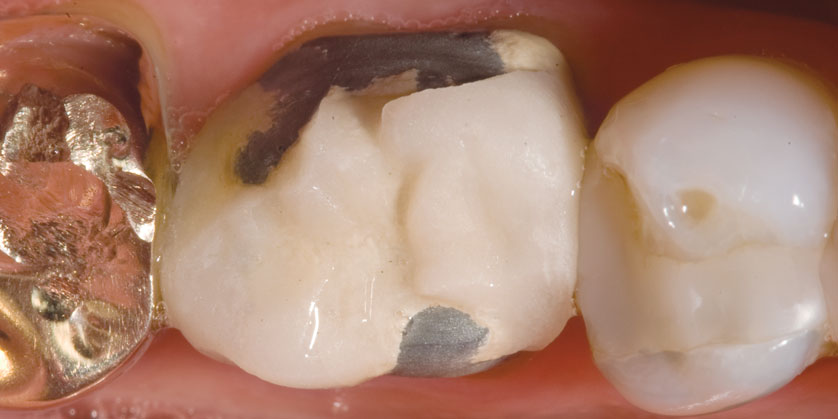
For more information, visit our website at www.brittenperio.com

